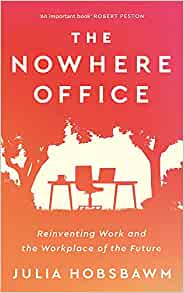I’m gliding into holiday reading, and have devoured a fine, albeit rather depressing, novel, Jon McGregor’s [amazon_link id=”0747561575″ target=”_blank” ]If nobody speaks of remarkable things[/amazon_link]. Now I’m well into the introductory sections of [amazon_link id=”1849761221″ target=”_blank” ]Lowry and the Painting of Modern Life[/amazon_link] by T.J.Clark and Anne Wagner, the catalogue of the recent, fine Tate exhibition they curated. It’s a brilliant essay – I’m a Lowry fan being from those parts.
They point out that: “England – we constantly shift between ‘England’ and ‘Britain’ in this book, and always on purpose – has been by and large so determined to evade, in representation, the dull catastrophe of its post-Imperial, post-Industrial-Revolution condition. Lowry does not.”
[amazon_image id=”1849761221″ link=”true” target=”_blank” size=”medium” ]Lowry and the Painting of Modern Life[/amazon_image]
This reminded me an essay by Hilary Mantel I read years ago, about the extremely narrow construction of English identity, in terms of stately homes, rolling green hills, cricket on the village green, CofE church socials run by Miss Marple, etc. Even Orwell (famously) caricatured it this way. What hope for a northern (English), working class, female of Irish Catholic descent, like her, to feel a sense of national identity, asked Mantel. (The other nations of the UK are different, of course.) I can’t track the exact quotation down now – I’d thought it was in her excellent memoir [amazon_link id=”0007142722″ target=”_blank” ]Giving Up The Ghost[/amazon_link], but can’t find it this morning.
The other aspect of modern life Lowry captures is of course work, work in the mills. Until around a decade ago there was very little English fiction about work. David Lodge’s [amazon_link id=”0099554186″ target=”_blank” ]Nice Work[/amazon_link] stood out as a bit of an exception. This was a great contrast with the days of [amazon_link id=”014143967X” target=”_blank” ]Dickens[/amazon_link], [amazon_link id=”014043464X” target=”_blank” ]Mrs Gaskell[/amazon_link], [amazon_link id=”046087781X” target=”_blank” ]George Gissing[/amazon_link] and their peers, writing about the effect of the Industrial Revolution on work and other aspects of life. I think this is changing now, and there is some fiction about post-Internet working life (nominations for good examples, please).
[amazon_image id=”0099554186″ link=”true” target=”_blank” size=”medium” ]Nice Work[/amazon_image]
However, visual representations of modern working life seem rarer – I can’t think of any. Cotton mills and assembly lines are iconic. But rows of people tapping away at terminals? Why is it so hard to visualise modern work?

